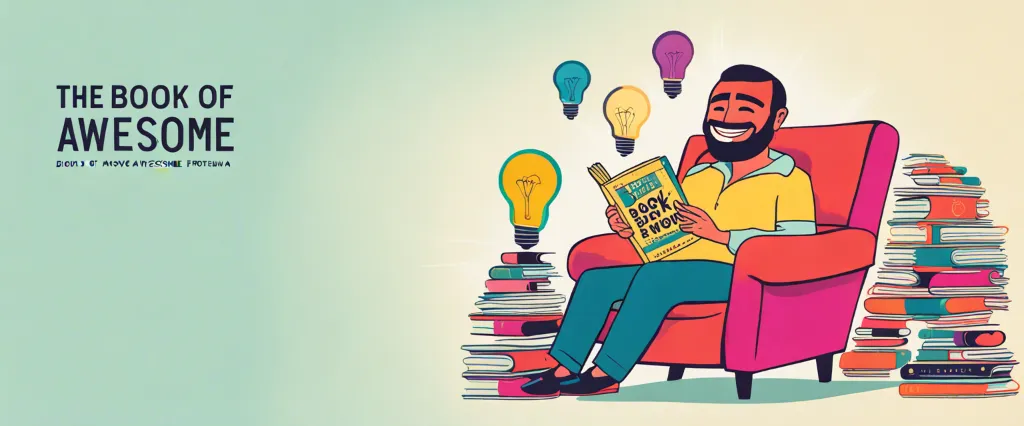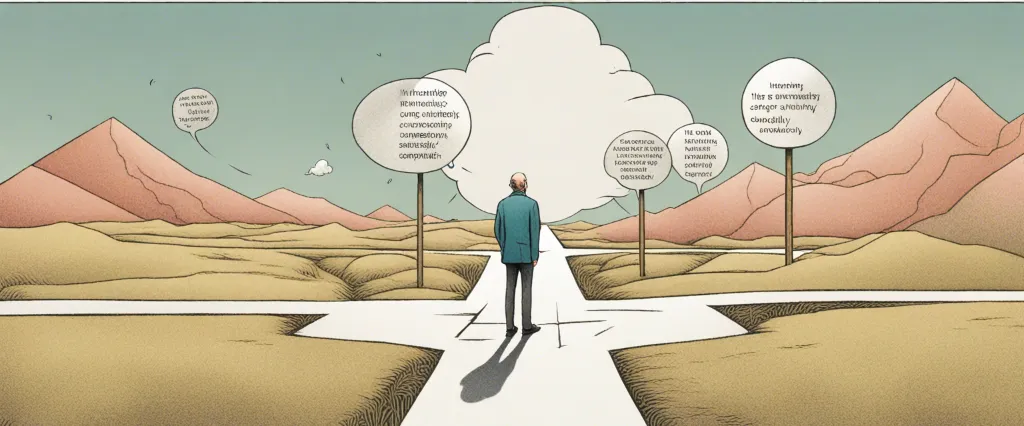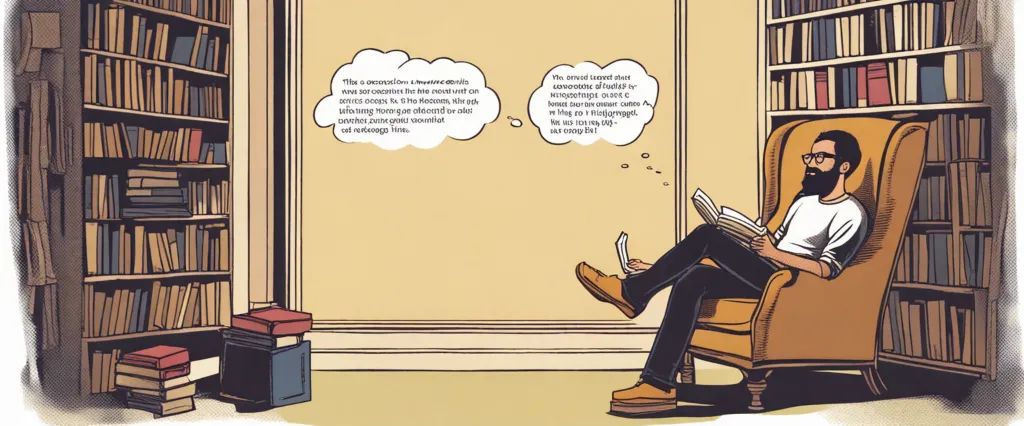
In a world constantly rushing towards the next big thing, the pursuit of joy and serenity appears to be more elusive than ever. Amidst the chaos and clamor, two books emerge as beacons of hope for those seeking solace and finding beauty in the simple things. “The Book of Awesome,” written by Neil Pasricha, and “Simplicity,” penned by Richard Rohr, offer unique perspectives on what it truly means to live a fulfilled life.
At first glance, these two books may seem worlds apart, one embracing the delightful moments of everyday life while the other delves into the depths of spirituality and inner peace. However, as we embark on this comparative study, we shall discover the surprising intersections between these seemingly disparate literary works. Both authors share a common goal, albeit through different lenses – to uplift and inspire readers to embrace a life of contentment and authenticity.
“The Book of Awesome” invites us to find joy in life’s simplest pleasures, celebrating the ordinary moments that often go unnoticed or unappreciated. Through a collection of anecdotes, Pasricha highlights the small victories that brighten our day, reminding us that happiness can be found in the most unexpected places. Conversely, Rohr’s “Simplicity” explores the profound power of simplicity in an age marked by complexity and excess. He advocates for a return to a slower, more intentional way of living, free from the burdens of materialism and societal expectations.
Despite the differing approaches, both authors address the overwhelming complexity of modern existence and advocate for finding solace in simplicity. Pasricha sheds light on the extraordinary aspects of the everyday, emphasizing how a grateful attitude can transform our lives. Rohr, on the other hand, challenges readers to strip away the superficial distractions of the world, allowing us to connect with our inner selves and find true fulfillment.
As we embark on this comparative journey, we will delve into the enchanting tales and thought-provoking concepts presented in these books. By examining the underlying themes, the authors’ unique perspectives, and their similarities, we shall explore how Pasricha and Rohr offer practical wisdom and guidance for navigating the complexities of the modern age while reminding us of the extraordinary hidden within the ordinary. Together, these texts invite us to reevaluate our priorities, reignite our zest for life, and discover the profound simplicity that lies at the heart of our existence.
Brief Summary of Two Books
The Book of Awesome by Neil Pasricha
The Book of Awesome by Neil Pasricha is a delightful collection of small, everyday joys that often go unnoticed. The author, Neil Pasricha, shares his personal experiences and invites readers to appreciate the simple things that bring happiness to our lives. The book is divided into several sections, each addressing a different aspect of life.
Pasricha begins by celebrating the little victories we encounter daily, such as popping bubble wrap or finding money in an old pair of jeans. He also highlights unique and satisfying experiences like falling asleep to the sound of rain or getting the last seat on the subway. Pasricha’s writing style is casual and relatable, drawing readers in with his anecdotes and humorous observations.
The author further explores the universal experiences we all share, including relatable moments like flipping to the cool side of the pillow or finally remembering the word we were struggling to recollect. Each entry is concise and stands on its own, making it easy for readers to pick up the book and explore a daily dose of positivity.
Throughout the book, Pasricha emphasizes the importance of being present and finding joy even in the simplest things. By embracing the ordinary, we can find extraordinary happiness. The Book of Awesome serves as a reminder to appreciate the little wonders that often go unnoticed in our busy lives.
In summary, The Book of Awesome by Neil Pasricha is a charming collection that celebrates the small pleasures in life and urges readers to find joy in the everyday moments we often overlook. Through his witty and relatable writing, Pasricha encourages us to embrace the awesome in our lives and cherish the simple things that bring happiness.
Simplicity by Richard Rohr
“Simplicity” by Richard Rohr is a spiritual guide that invites readers to embrace a lifestyle of simplicity and find true freedom and happiness. Drawing from various religious traditions and teachings, Rohr emphasizes the importance of slowing down, letting go of material possessions and ego attachments, and focusing on what truly matters in life. He encourages readers to live in the present moment, cultivate inner stillness and solitude, and practice acts of generosity and compassion towards others. Throughout the book, Rohr explores the transformative power of simplicity and how it can lead to a more meaningful and fulfilled life.
Comparison between Two Books

Similarities in Psychology
Although “The Book of Awesome” by Neil Pasricha and “Simplicity” by Richard Rohr may not seem to have an immediate connection to the field of psychology, they both touch upon certain psychological principles and insights. Here are some similarities in terms of psychology found in these books:
1. Positive psychology: Both books emphasize the importance of appreciating the small, simple things in life. “The Book of Awesome” encourages readers to find joy in everyday experiences, while “Simplicity” promotes a deeper contentment and fulfillment through letting go of unnecessary complexities. Both perspectives align with the principles of positive psychology, which aims to enhance well-being by focusing on strengths, gratitude, and positive experiences.
2. Mindfulness and presence: Psychology often emphasizes the benefits of mindfulness and being fully present in the current moment. Both books touch upon this concept – “The Book of Awesome” by encouraging readers to savor small moments and focus on the present, and “Simplicity” by encouraging a similar mindset through letting go of worries about the future or attachment to material possessions.
3. Cognitive reframing: Another psychological concept found in both books is the power of cognitive reframing. “The Book of Awesome” demonstrates how changing our perspective on situations can transform our emotional experience, while “Simplicity” suggests that reframing our attitudes towards possessions and external appearances can bring greater inner peace. Both books suggest that changing our thoughts and attitudes can impact our overall well-being.
4. Emotional intelligence: While not explicitly mentioned, both works indirectly touch upon the importance of emotional intelligence. “Simplicity” delves into concepts like humility, self-awareness, and self-acceptance, which are all key components of emotional intelligence. Similarly, “The Book of Awesome” encourages readers to acknowledge and embrace a wide range of emotions, showing an understanding of emotional well-being.
While these books may not delve deeply into psychological theories or concepts, they both touch upon various psychological principles and offer perspectives that align with psychological research on well-being, mindfulness, and emotional intelligence.
Divergences in Psychology
The Book of Awesome by Neil Pasricha and Simplicity by Richard Rohr are two distinct works that explore different aspects of life and offer unique perspectives. While both books touch on psychological aspects, they approach the subject in contrasting ways.
In The Book of Awesome, Pasricha focuses on gratitude and finding joy in life’s simple pleasures. He celebrates the small, everyday moments that often go unnoticed. This book takes a lighthearted and positive approach to psychology by emphasizing the power of appreciation and mindfulness. Pasricha encourages readers to shift their focus towards the positive aspects of life and cultivate a happier mindset.
Conversely, Simplicity by Richard Rohr delves into a deeper psychological examination of the human condition. Rohr explores the spiritual and psychological benefits of simplicity and the importance of letting go of material possessions, ego, and attachments. He argues that embracing simplicity fosters personal growth and fosters a stronger connection with one’s spirituality.
One notable divergence in their perspectives on psychology can be seen in the contrasting approaches to happiness and contentment. Pasricha’s book celebrates moments of joy and encourages readers to actively seek out positivity. On the other hand, Rohr’s Simplicity suggests that true contentment comes from detaching oneself from material possessions and finding happiness within oneself.
Additionally, another divergence can be observed in their approaches to personal growth. The Book of Awesome emphasizes the power of gratitude and the cultivation of a positive mindset. It promotes personal growth by embracing the small moments that bring joy. In contrast, Simplicity takes a more introspective approach, focusing on the psychological benefits of simplicity and the process of letting go.
While both books touch on psychology in their exploration of happiness and personal growth, they differ in their methodologies and perspectives. The Book of Awesome emphasizes the importance of gratitude and mindfulness in finding joy, while Simplicity takes a more spiritual and introspective approach to psychological well-being.

Conclusion
Both “The Book of Awesome” by Neil Pasricha and “Simplicity” by Richard Rohr offer valuable insights and perspectives, but they cater to different interests and preferences.
“The Book of Awesome,” written by Neil Pasricha, is a collection of delightful and uplifting moments that celebrate the small joys in life. It focuses on finding happiness in everyday occurrences and appreciating simple pleasures. If you enjoy reading about positivity, finding joy in the little things, and being reminded of the beauty of life’s seemingly mundane aspects, then this book would be a great choice.
On the other hand, “Simplicity” by Richard Rohr takes a deeper, spiritual approach to simplicity. Rohr explores the concept of living a simpler life by letting go of unnecessary attachments, both material and psychological. It delves into the benefits of embracing inner stillness and simplicity as a means of finding peace and contentment. If you are interested in exploring simplicity from a spiritual and contemplative perspective, this book may be more suitable for you.
Ultimately, the decision depends on your personal interests and preferences. If you prefer a light and uplifting read that celebrates the small joys of life, “The Book of Awesome” would be a good choice. On the other hand, if you seek a deeper exploration of simplicity and its spiritual implications, “Simplicity” would be worth reading.


